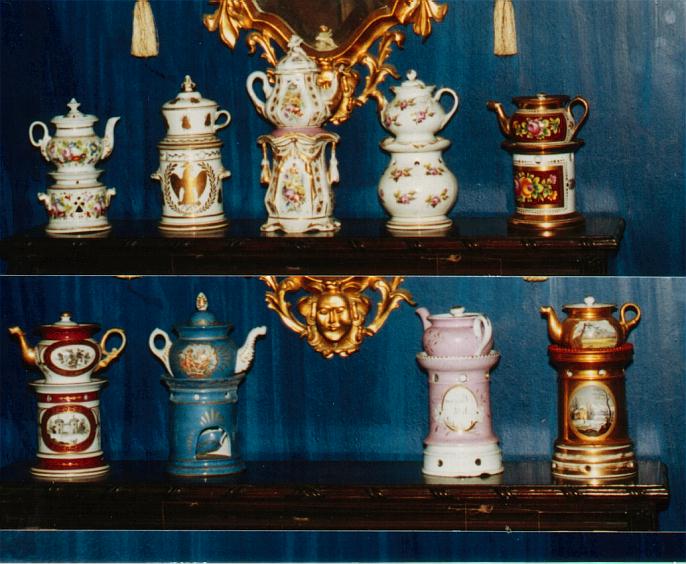|
History
The earliest veilleuses were made as food warmers with a bowl instead of a teapot on a stand; this was used for porridge, soup, or invalid's drink in sick rooms or hospitals. Later the teapot replaced the bowl and veilleuse-theirres came into use. They represent a mode of brewing and serving floral or herb tea, or tisane to babies during the night hours. They offered the advantage not only of furnishing a warmed medicament that would give comfort to a restless baby, but also afforded a light in the sick room long before the electricity was available. They were ornamental as well as useful. Most of them were translucent.
For the benefit of families of distinction, and aristocrats, naturally they were made more ornate and decorative, some in the form of figurines or personages, some with insignia or crests. These began to appear first about 1830 in France.
A short candle, nut or vegetable oils was the fuel used to provide the heat and light. A small boat-shaped or rounded vessel known as a "godet" was filled with oil, with a wick that was floated. The porcelain had been tempered to withstand heat for a long period of time.
Many of the "potteries" in the early days did not use or affix identifying marks, therefore the "place of birth" of many veilleuses cannot be told with certainty.
Article taken from the Trenton Museum Web Page

|
 |
|
|  |
|
My Background
My name is Tullio, born and living in Lima Peru.
Have collected veilleuses for 10 years,ever since my grandmother inherited me the Napoleonic piece.
All the pieces have been bought in Europe, and are in very good condition, appart from the natural rubbing of the gold gilting.
|
 |
|
|
|

